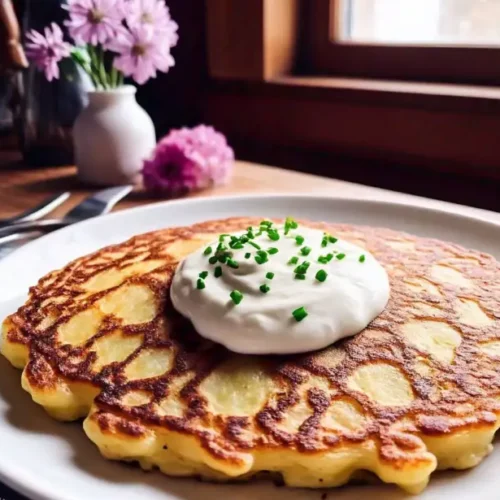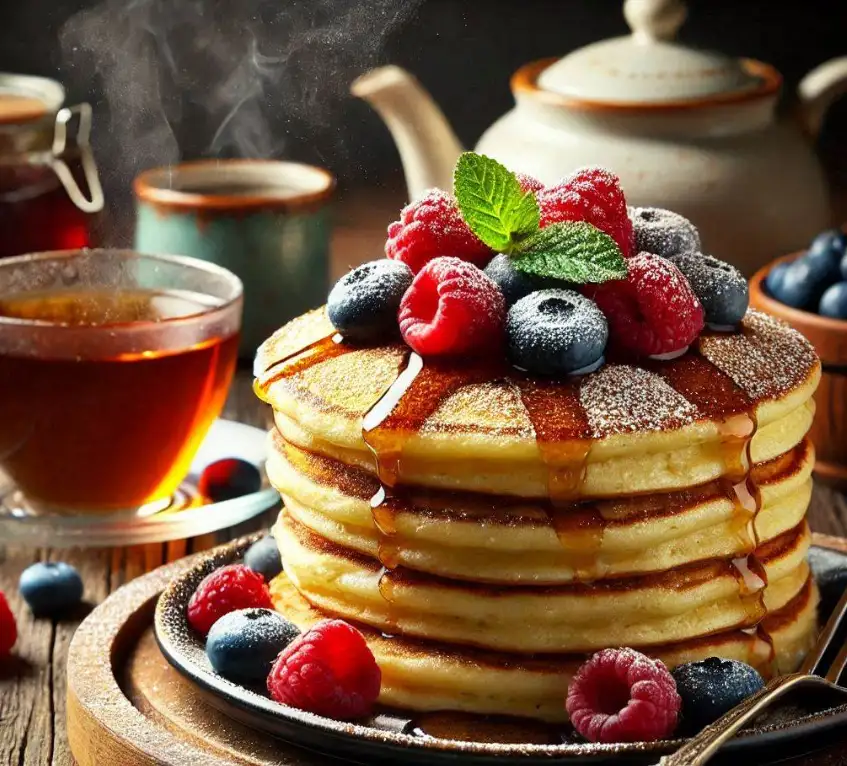Have you ever wondered what makes Irish pancakes so special? Many people find themselves confused by the differences between pancakes from various cultures and may even struggle to recreate the perfect texture at home. Without the right guidance, it’s easy to end up with a disappointing result. But don’t worry! In this guide, we’ll unveil the secrets of Irish pancakes, diving into their rich history, sharing a foolproof traditional recipe, and providing creative serving ideas to elevate your pancake game.
The History of Irish Pancakes
Shrove Tuesday, or Pancake Day, marks the last day before Lent, a period of fasting and reflection. Historically, this day was an opportunity to use up rich ingredients like milk, eggs, and butter, which were traditionally avoided during Lent. Pancakes were the perfect solution, as they incorporated all these ingredients into a simple yet satisfying dish.
Irish pancakes are particularly associated with this celebration, symbolizing indulgence before the austerity of Lent. The practice of making pancakes on Shrove Tuesday continues today, keeping this delicious tradition alive.

Traditional Irish Pancakes Recipe
Ingredients
- 1 cup all-purpose flour
- ½ teaspoon salt
- 4 eggs lightly beaten
- 1½ cups milk
- 2 oz half a stick butter, melted (plus extra for frying)
- Optional toppings: fresh lemon juice superfine sugar, jams, Nutella, honey, or syrup
Instructions
- Prepare the Batter: In a large bowl, whisk together the flour and salt. Make a well in the center and pour in the eggs and milk. Gradually whisk until the batter is smooth. Stir in the melted butter.
- Heat the Pan: Heat an 8-inch skillet over medium-high heat and brush with a little melted butter.
- Cook the Pancakes: Pour about ¼ cup of batter into the pan, tilting it to spread the batter evenly. Cook for 1 minute until bubbles form and the top looks slightly dry. Flip and cook for another minute.
- Serve: Stack the cooked pancakes on a plate and keep warm. To serve, drizzle with lemon juice and sprinkle with sugar or add your favorite toppings.
Modern Variations of Irish Pancakes
While the traditional toppings of lemon juice and sugar remain popular, there are plenty of modern ways to enjoy Irish pancakes:
- Decadent Preserves: Spread them with chocolate-raspberry preserves for a rich treat.
- Savory Options: Fill with smoked salmon and cream cheese for a savory twist.
- Sweet Indulgences: Top with Nutella, whipped cream, or fresh fruit.
How Irish Pancakes Compare to Other Pancakes
- Irish vs. American Pancakes: Irish pancakes are thinner and don’t use baking powder, making them closer to crêpes than the fluffy buttermilk pancakes popular in the U.S.
- Irish vs. French Crêpes: While similar in texture, Irish pancakes are often slightly thicker and traditionally served with simpler toppings.
Cultural Significance of Irish Pancakes
Pancake Day is more than just a culinary tradition; it’s a time for families to gather and celebrate before the solemnity of Lent. Many households in Ireland maintain the custom of flipping pancakes together, adding a sense of fun and connection to the day.
Tips for Perfect Irish Pancakes
- Use Fresh Ingredients: High-quality butter and eggs make a noticeable difference.
- Let the Batter Rest: Allowing the batter to sit for 15-30 minutes ensures a smoother texture.
- Don’t Overcrowd the Pan: Cook one pancake at a time for best results.
- Keep Them Warm: Stack pancakes on a plate and cover with foil to retain heat while cooking the rest.
Whether you’re celebrating Pancake Day or simply indulging in a delightful breakfast, Irish pancakes are a versatile and delicious choice. Their rich history and simple preparation make them a timeless dish worth sharing. Try the traditional recipe, experiment with modern toppings, and enjoy the flavors of Ireland in your kitchen!

